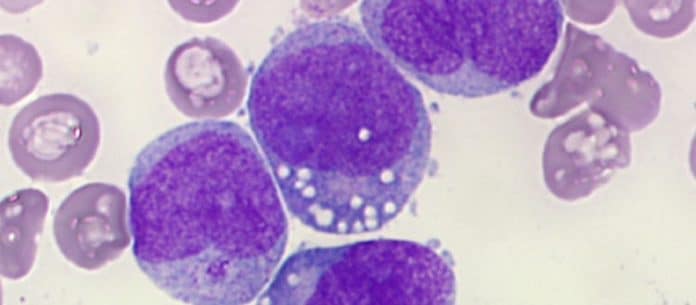Acute myeloid leukemia (AML) is a hazardous form of cancer. It mainly affects blood and bone marrow cells and can sometimes spread to other body parts. Novel therapeutic approaches for AML are therefore critically needed.
A team from the University of Geneva (UNIGE), Switzerland, and Inserm, in France, have identified a previously unknown mechanism that could lead to the development of new therapies.
Adenosine monophosphate (AMP)-activated protein kinase (AMPK) is a key enzyme in the energy balance of tumor cells. It promotes catabolism, represses anabolism, and enhances autophagy in response to stress.
Scientists discovered that the selective activation of AMPK causes tumor cell death by triggering the cells’ stress response. The team also exploited this energy gap in an animal model of the disease: a combination of two drugs — one already on the market — has indeed shown promise.
However, their effectiveness has yet to be confirmed on leukemia stem cells.
Jérôme Tamburini, an associate professor in the Department of Medicine and the Translational Research Centre in Onco-Haematology (CRTOH) of UNIGE Faculty of Medicine and at the Swiss Cancer Center Léman (SCCL), said, “A cell signaling pathway called AMPK is of particular interest to him. This pathway is activated when energy is lacking and initiates the degradation of certain nutrients to produce the necessary energy – a process called catabolism. As without energy, no cell can survive, could it be possible to selectively manipulate this mechanism in tumor cells to cause their destruction while preserving healthy cells?”
Previously, it was found that a pharmacological component — GSK621- is an excellent activator of AMPK in vitro.
Jérôme Tamburini said, “After this initial proof of principle, we had to decipher the biochemical mechanisms at work in order to understand them in detail, and in particular which cellular pathways did GSK621 activate in leukemia cells, the first step in hoping to exploit this phenomenon for therapeutic purposes.”
Scientists started by performing a gene expression analysis of human tumor cells. They identified an enzyme called PERK, which activated in response to the presence of GSK621.
Jérôme Tamburini said, “The activation of AMPK thus triggers the activation of PERK, followed by a chain of reactions leading to apoptosis, the programmed death of the cell. In addition, the activation of AMPK by GSK621 sensitizes the cells to the effects of another pharmacological drug, the venetoclax, which is now widely used to treat acute myeloid leukemia, although with limited effectiveness when used alone.”
By combining two drugs in mice, scientists found that this combination controlled tumor development much more effectively than monotherapy. While GSK621 was not designed to be a drug, other products are currently in clinical trials to combat metabolic diseases, which activate the AMPK pathway.
Jérôme Tamburini said, “Understanding the mechanism involved has brought to light potential therapeutic targets that were previously unknown. We will now be able to review all the drugs known to have an effect on these pathways and determine which combinations would be the most effective.”
Journal Reference:
- Adrien Grenier et al. AMPK-PERK axis represses oxidative metabolism and enhances apoptotic priming of mitochondria in acute myeloid leukemia. DOI: 10.1016/j.celrep.2021.110197
